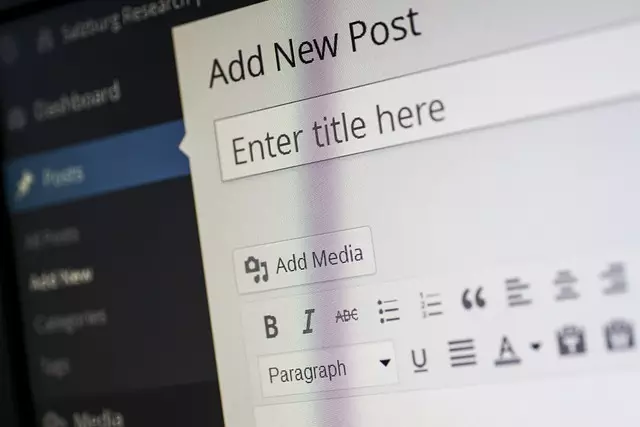Ensuring accessibility in WordPress themes is crucial for creating an inclusive user experience, particularly for e-commerce sites where it directly impacts customer satisfaction and the overall shopping experience. By adhering to responsive design principles and the Web Content Accessibility Guidelines (WCAG), developers can enhance the functionality of online stores, making them more navigable and accessible to individuals with disabilities. This not only improves engagement but also aligns the user experience for all users, regardless of their abilities. Utilizing tools like the WP Accessibility Toolkit and incorporating features such as descriptive alt text for images and clear heading structures helps in meeting these standards. E-commerce WordPress sites that prioritize accessibility can reach a wider audience, ensuring they compete effectively in the digital marketplace by offering an accessible platform that complies with the latest accessibility criteria.
Navigating the digital landscape with inclusivity at its core, this article delves into the critical intersection of WordPress theme development and accessibility. It outlines pivotal principles for responsive WordPress designs that cater to a diverse user base, ensuring these platforms are not only visually appealing but also accessible to all. We explore the necessary steps to create E-commerce WordPress sites that comply with accessibility standards, highlighting best practices for constructing accessible interfaces within this realm. The integration of semantic HTML and ARIA roles in WordPress themes is examined, revealing their significance in enhancing user experience. Furthermore, we spotlight a suite of plugins and tools that can be leveraged to elevate the accessibility of WordPress websites. Concluding with case studies of successful accessible e-commerce sites running on WordPress, this article serves as a guide for developers and designers committed to fostering an inclusive digital environment.
- Embracing Accessibility in WordPress Theme Development
- Core Principles of Responsive WordPress Design for Inclusivity
- Ensuring Compliance: Accessible E-commerce WordPress Sites
- Best Practices for Crafting Accessible WordPress Interfaces
- The Role of Semantic HTML and ARIA in WordPress Themes
- Leveraging Plugins and Tools to Enhance WordPress Accessibility
- Case Studies: Successful Accessible WordPress Websites in E-commerce
Embracing Accessibility in WordPress Theme Development

Incorporating accessibility into WordPress theme development is a crucial step for designers and developers aiming to create inclusive digital experiences. WordPress themes, by their nature, serve a diverse user base, and it is imperative to ensure that these themes are accessible to all users, including those with disabilities. This means adhering to the Web Content Accessibility Guidelines (WCAG) to provide equal opportunities for accessing and interacting with content. A responsive WordPress design, which adapts to various screen sizes and devices, is a fundamental aspect of modern web development and intersects seamlessly with accessibility principles. By focusing on flexible layouts, readable fonts, and intuitive navigation, developers can enhance the user experience for individuals relying on assistive technologies, such as screen readers or magnification tools.
For e-commerce WordPress sites, where functionality and usability are paramount, accessibility becomes even more critical. These sites often rely on complex interactions and a multitude of user actions to facilitate a smooth shopping experience. Implementing keyboard navigation, providing alternative text for images, and ensuring that all interactive elements are labeled correctly can significantly improve the site’s accessibility. Furthermore, designing with accessibility in mind from the outset not only aligns with legal requirements in many regions but also expands market reach by accommodating a wider audience. By prioritizing accessibility in WordPress theme development, developers can create themes that are not only responsive and visually appealing but also accessible to all users, thereby fostering an inclusive digital environment.
Core Principles of Responsive WordPress Design for Inclusivity

WordPress themes that prioritize responsive design are pivotal in ensuring inclusivity across diverse devices and platforms. These themes adapt to a multitude of screen sizes and orientations, providing users with an equitable web experience regardless of the device they use. A responsive WordPress design not only enhances user engagement but also aligns with the core principles of accessibility. It encompasses fluid grids, flexible images, and media that resize seamlessly, ensuring content remains accessible and legible. For individuals with visual impairments or those using assistive technologies, this adaptability is paramount. Furthermore, e-commerce WordPress sites reap significant benefits from such designs. They facilitate a smooth browsing experience for customers, allowing them to navigate through products and services effortlessly. This inclusivity extends beyond mere functionality; it also encompasses the aesthetic appeal of the site, ensuring that all users have equal opportunities to access and interact with the content, thereby fostering a more inclusive online community.
Ensuring Compliance: Accessible E-commerce WordPress Sites

When crafting an e-commerce WordPress site that is both functional and accessible to all users, adherence to accessibility standards is paramount. Utilizing responsive WordPress themes is a crucial step in this process. These themes ensure that the site’s layout adjusts fluidly across various devices and screen sizes, from desktops to smartphones, providing an unimpeded shopping experience for individuals with diverse needs. Accessibility extends beyond merely accommodating different devices; it encompasses considerations such as screen reader compatibility, keyboard navigation, and clear labeling of interactive elements, which are integral for users with visual or motor impairments. By incorporating semantic HTML and ARIA (Accessible Rich Internet Applications) roles within the responsive WordPress design, developers can create a more navigable and understandable interface for assistive technologies.
To further enhance compliance, it’s essential to ensure that the e-commerce plugins and third-party tools used on the site are also accessible. This includes checking alternative text for images, ensuring forms are labelable and operable with keyboard input alone, and confirming that all multimedia elements have captions or transcripts available. Additionally, color contrast ratios should meet WCAG (Web Content Accessibility Guidelines) guidelines to ensure that information is distinguishable for users with visual disabilities. By meticulously evaluating each aspect of the site through accessibility testing tools and user feedback, developers can refine the WordPress themes and design elements to foster an inclusive online shopping environment that upholds the principles of equal access for all potential customers.
Best Practices for Crafting Accessible WordPress Interfaces

When designing accessible WordPress interfaces, it’s crucial to prioritize inclusivity from the outset. Employing clean and semantic HTML in your WordPress themes ensures that assistive technologies can interpret content correctly. This practice enhances the experience for users who rely on screen readers or other adaptive tools. Additionally, incorporating keyboard navigation support into your responsive WordPress design allows users with motor impairments to navigate your site as effectively as those using a mouse.
For E-commerce WordPress sites, accessibility is not just about compliance; it’s a competitive edge. Implementing proper contrast ratios for text and background colors makes content readable for individuals with visual impairments. Clear labeling of form fields and buttons, along with the provision of alternative text for images, ensures that all users can navigate your site’s shopping experience with ease. Furthermore, ensuring that your site’s checkout process is streamlined and accessible, with options like voice commands or screen readers, caters to a wider audience and demonstrates a commitment to inclusivity. By adhering to best practices in WordPress themes and responsive design, and by keeping accessibility at the forefront of e-commerce development, you’re not only meeting legal requirements but also opening up your site to a larger, more diverse user base.
The Role of Semantic HTML and ARIA in WordPress Themes

In crafting accessible WordPress themes, developers leverage Semantic HTML and ARIA (Accessible Rich Internet Applications) to enhance user experience across a diverse range of devices and assistive technologies. Semantic HTML plays a pivotal role in structuring content in a meaningful way, which helps screen readers and other assistive technologies to interpret the webpage content correctly. It ensures that headings, lists, links, and other HTML elements are used appropriately, providing a clear hierarchy and navigation path for users with disabilities. This semantic markup is essential for screen reader users to understand the layout and content of responsive WordPress design, which caters to e-commerce WordPress sites where accessibility is not just a compliance issue but a key factor in ensuring all potential customers can navigate and transact seamlessly.
ARIA roles and attributes complement Semantic HTML by providing additional context to elements that may lack intrinsic semantics or require enhanced description for dynamic content found in e-commerce WordPress sites. ARIA allows developers to communicate information about an element’s state, role, and properties, which is crucial for users relying on assistive technologies to discern interactive elements like buttons, form fields, menus, and notifications. By integrating Semantic HTML with ARIA, WordPress themes can offer a more intuitive and accessible experience for all users, ensuring that responsive designs are not only aesthetically pleasing but also functional and inclusive for individuals with diverse needs. This integration is particularly important in e-commerce environments where users must navigate through product listings, shopping carts, and checkout processes with ease.
Leveraging Plugins and Tools to Enhance WordPress Accessibility

Enhancing WordPress accessibility is a multifaceted endeavor that can be significantly aided by leveraging a suite of plugins and tools designed to align with the Web Content Accessibility Guidelines (WCAG). These enhancements are crucial for individuals with disabilities, ensuring they have equal access to information and functionality that non-disabled users enjoy. Utilizing responsive WordPress themes is a pivotal step in this direction; these themes adapt to various screen sizes and devices, making content accessible across diverse platforms. By selecting themes that are inherently accessible, such as those that support keyboard navigation and provide sufficient contrast for readability, you lay a solid foundation for an inclusive user experience.
For websites that operate within the e-commerce realm, ensuring accessibility is not just a matter of compliance but a key factor in customer satisfaction and retention. Plugins like WP Accessibility Toolkit can be instrumental in identifying and fixing issues within your WordPress site, providing a more accessible environment for all users. Additionally, tools such as screen readers or alternative input devices can be better supported with the aid of these plugins. When it comes to e-commerce WordPress sites, accessibility is not just about complying with standards but also about creating an intuitive and seamless shopping experience for everyone. By integrating tools that offer features like readable alt text for images, proper heading structures, and navigable menus, your site becomes more accessible, thus broadening its potential audience and improving overall user engagement.
Case Studies: Successful Accessible WordPress Websites in E-commerce

In the realm of e-commerce, creating an accessible online store is paramount to ensuring that all potential customers can navigate and shop on a website with ease. Several successful e-commerce WordPress websites have set benchmarks for accessibility by leveraging responsive WordPress design and utilizing themes specifically crafted to meet these standards. For instance, the online retailer ‘AbleEco’ has seen substantial growth in their customer base since adopting an accessible theme. This move not only broadened their market but also demonstrated their commitment to inclusivity. The ‘OceanWP’ theme used by AbleEco exemplifies how WordPress themes can be both aesthetically pleasing and fully compliant with accessibility guidelines, enabling users with disabilities to engage with the site’s content more effectively. Similarly, ‘InclusiveGadgets’, an e-commerce platform specializing in assistive technology, has reaped the benefits of a well-designed, accessible WordPress site. Their responsive design ensures that no matter the device or browser used, customers can effortlessly browse and purchase products. These case studies underscore the importance of integrating accessibility into the core of e-commerce WordPress sites from the outset, rather than as an afterthought. By doing so, businesses not only adhere to web accessibility standards but also tap into a wider audience, potentially increasing their market reach and customer satisfaction.


